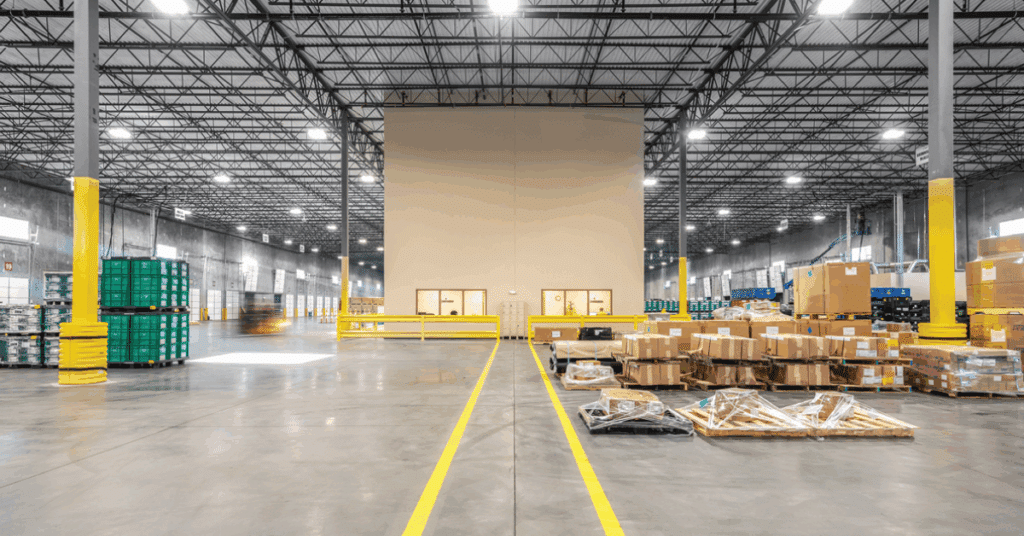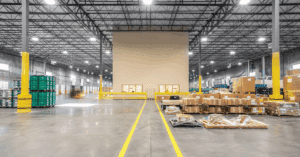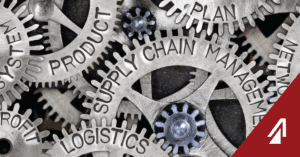For automotive and industrial manufacturers in North America — especially those with production and supplier networks spanning the U.S.–Mexico border — the choice between cross-dock and consolidation models can have a significant impact on your supply chain’s efficiency, cost, and reliability. The decision determines how much inventory you carry, how fast you can replenish your lines, and how resilient you are when the unexpected happens.
Which model makes more sense for your operation? The answer often depends on how your products move, where your suppliers are located, and how much flexibility your production schedule allows. Let’s look at the differences in practical, operational terms and explore how each model works in a cross-border environment.
Understanding the Basics
At a high level, cross-docking is all about speed. Shipments arrive at a facility, get sorted or sequenced, and are quickly loaded onto outbound trucks — often within hours. There’s little to no storage involved. Think of it as a transfer point designed to keep goods moving continuously through a network.
Consolidation, on the other hand, is about efficiency. Multiple smaller shipments from different suppliers or locations are gathered at a facility and combined into full truckloads (or container loads) before moving to their destination. Freight consolidation is a way to reduce transportation costs, even if it means goods spend a bit more time on the dock waiting for the other smaller shipments needed to fill a load.
Both strategies are valuable — they just solve different problems.
The Flow: Inventory vs. Movement
In a cross-dock environment, inventory barely exists. The goal is to keep materials in motion. As soon as inbound trailers arrive, the product is unloaded, sorted by destination or production sequence, and loaded again for immediate dispatch. This approach works well for manufacturers running just-in-time or just-in-sequence operations, where every hour of delay could shut down a production line.
Consolidation, on the other hand, intentionally introduces a pause in the flow. Shipments are held for a short period until there’s enough volume to justify a full load. The trade-off is simple: you add some dwell time, but you gain lower per-unit transportation costs and better truckload utilization.
For border operations, the difference is more than academic. Cross-docking minimizes inventory exposure and helps maintain production cadence. Consolidation can significantly lower freight costs for northbound or southbound shipments, especially when combining volumes from multiple suppliers.
Timing, Cost, and Control
Timing is where these two models differ the most. Cross-docking is ideal when schedules are predictable, and suppliers can hit delivery windows consistently. If your inbound shipments are reliable, you can move materials from the supplier to the line-side with minimal delay. However, that speed comes with the need for precision. A late truck can disrupt the entire outbound schedule, which means you’ll need excellent visibility tools and disciplined appointment control.
Consolidation, in contrast, provides more control over transportation costs. Because you’re waiting to fill trucks, you can maximize cube and weight utilization, reducing the cost per pallet or per pound. For many automotive and industrial shippers, this model is particularly beneficial for regular replenishment or non-critical parts that don’t need to move immediately. The downside is that the extra dwell time adds to overall lead time — so this model suits products that can handle a few extra days in transit.
Handling and Risk
Operationally, each model carries different handling challenges. Cross-dock operations demand speed and coordination. The product moves quickly, often with multiple touches in a short period. Labor peaks can occur when inbound and outbound volumes overlap, so efficient staffing and a strong warehouse management system are critical to avoid errors or congestion.
Consolidation, meanwhile, has a slower rhythm but different risks. Goods may be temporarily stored or combined with shipments from other suppliers, so packaging, pallet quality, and labeling become crucial. Poorly packed freight can lead to damage when mixed loads are built, especially with heavy industrial components or irregular parts common in automotive supply chains.
Border-Specific Realities
The U.S.–Mexico border adds another layer of complexity that makes this decision even more strategic. For manufacturers that depend on parts moving in both directions, timing customs clearance and carrier schedules can make or break your network’s efficiency.
In a cross-dock setup near the border, documentation and customs pre-clearance must be flawless. Delays in paperwork can create detention charges or missed production windows. Many companies integrate customs brokers directly into their dock scheduling systems to avoid such bottlenecks.
With consolidation centers, there’s a bit more flexibility. While shipments are aggregated, brokers can prepare and verify documentation in parallel. This approach is especially useful for bonded or foreign-trade zone (FTZ) facilities, where duties can be deferred until goods are officially released.
Drayage and capacity constraints also influence the choice. When short-haul drayage between border points and manufacturing centers is expensive or appointment-driven, consolidation helps minimize the number of moves. But when speed is paramount — for example, when supporting daily production sequences — cross-docking on either side of the border can keep materials flowing without buildup.
The flow direction matters, too. Southbound shipments benefit from consolidation, primarily when multiple U.S. suppliers feed a single Mexican assembly plant. Northbound shipments, often carrying finished goods or components bound for U.S. plants, typically lean on cross-docking to shorten lead times and maintain tight delivery windows.
Measuring What Matters
Choosing between these models should be a strategic decision. The best approach is to compare key performance indicators side by side. Logistics and operations managers often look at metrics such as freight cost per unit, inventory days on hand, on-time delivery to line, dock turn time, and damage rate. Customs clearance delays and detention incidents also tell an important story for border-related operations.
When you compare these numbers, patterns emerge quickly. Cross-dock networks typically shine in speed, visibility, and low inventory costs, while consolidation centers outperform freight cost efficiency and network utilization. Knowing which metric aligns most closely with your business priorities will clarify which model makes sense — or whether a hybrid strategy is best.
The Hybrid Sweet Spot
In reality, most automotive and industrial supply chains don’t fit neatly into one category or the other. The most successful networks use both models strategically.
A hybrid approach might look like this: critical components that feed daily production lines move through a cross-dock near the border to maintain just-in-time flow. Meanwhile, slower-moving or lower-priority parts are consolidated into full truckloads to reduce cost. This blended model gives manufacturers speed where they need it and savings where they can afford it.
Hybrids are also practical when dealing with supplier variability. If some suppliers can’t consistently meet strict delivery windows, their shipments can be routed through consolidation centers instead of cross-docks, reducing the risk of dock congestion. High-volume or predictable lanes can stay on the faster path.
Implementing the Right Fit
For manufacturers considering a shift — or those looking to refine an existing model — the process starts with segmenting your SKUs. Not every product needs the same treatment. Identify which parts are critical to production continuity, which can tolerate some delay, and which are ideal candidates for aggregation.
From there, standardize packaging and labeling across your supplier base. Consistency makes both cross-dock and consolidation operations smoother, reducing rework and damage.
Next, integrate customs brokerage and visibility tools into your scheduling process. Border operations demand synchronization — your customs documents, carrier appointments, and dock schedules should move in unison.
Finally, consider running a pilot program. Select one or two key lanes — say, shipments moving from Monterrey to Detroit or Toluca to Laredo — and test both models side by side. Track the KPIs that matter most to your team, whether that’s transit time, cost per shipment, or dock throughput. You’ll have real data to inform a larger rollout.
The Bottom Line
There’s no one-size-fits-all answer to the cross-dock vs. consolidation debate — and that’s exactly the point. Each model offers distinct advantages, and the best logistics strategies use both in the right places.
If your operation depends on tight production windows, high-frequency shipments, and minimal inventory exposure, cross-docking will help you maintain speed and control. If your priority is reducing cost per unit, managing multiple smaller suppliers, or optimizing carrier utilization, consolidation is likely the better fit.
But for most automotive and industrial manufacturers operating in the North American corridor, the smartest move is a balanced strategy that combines both. Cross-dock what’s urgent. Consolidate what can wait. And always integrate your customs, carriers, and visibility systems, so the border doesn’t become a bottleneck in your supply chain.
In today’s environment, flexibility is your greatest asset — and understanding how these two models complement each other is the first step toward a more resilient, cost-effective cross-border network.
With more than 30 facilities throughout North America and Europe, ProTrans offers a well-established network for both cross-dock operations and freight consolidation expertise. Contact us today and let’s work together to analyze your supply chain and identify ways we could improve your operations by integrating your freight into our network.



